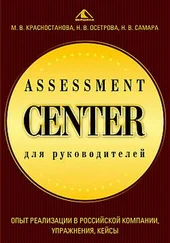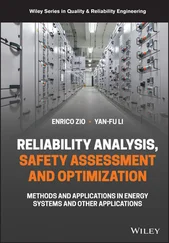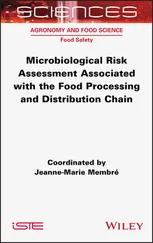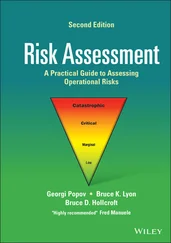The Norwegian offshore industry has used quantitative RAC since around 1985. The legislation in Norway partly requires that the oil companies themselves should define criteria and the criteria are therefore formulated in different ways and with varying risk levels. Among the criteria that are in use or have been used by different companies are the following:
Maximum annual probability of being killed for an average person working on the installation.
Maximum annual probability of being killed for individuals in the group exposed to the highest risk. The groups are defined to distinguish between groups exposed to high risk (e.g. drill crew) and groups with lower risk (e.g. admin staff).
Maximum annual frequencies for accidents with varying consequence from high to low. This is expressed through an ‐curve (ref Chapter 6).
Maximum frequency of loss of main safety functions (MSFs). MSFs are key functions that need to be in place to ensure that personnel on the installation can remain safe if a serious accident like a major fire occurs. An example of an MSF may be “A safe area where personnel can stay until they can be evacuated (safe refuge, temporary refuge).” MSFs are explained in more detail in Chapter 6.
5.2.1 Acceptable and Tolerable Risk
Earlier in this chapter, it is stated that risk acceptance is about balancing the ideal solution with no risk against the resources we have available to reduce risk. In practice, this balance is strongly influenced by the benefits we hope to receive from accepting risk. We are often willing to accept a very high risk voluntarily if the benefit we receive is very high. An industrial worker may, for example, accept the risk from the plant that employs her because the activity provides her income. Her neighbor, on the other hand, may find that the individual risk that she is exposed to from the same plant is totally unacceptable, as she receives no direct benefit from its operations. To make things even more complicated society may decide that the benefits to the local community (employment, taxes) are so large that the risk can be accepted. Who, then is the legitimate decision‐maker? A manager accepting a risk that she herself will not be exposed to may have very little trouble doing so. The worker or neighbors who face the risk with their own lives may be of another opinion.
To capture the complexity of acceptable risk problems, HSE (2001) distinguishes between tolerable and acceptable risk:
…“tolerable” does not mean “acceptable”. It refers instead to a willingness by society as a whole to live with a risk so as to secure certain benefits in the confidence that the risk is one that is worth taking and that it is being properly controlled. This does not imply that the risk is acceptable to everyone, meaning that everyone would agree without reservation to take the risk or have it imposed on them.
Based on this distinction, the UK legislation operates with three categories of risk: unacceptable, tolerable, and broadly acceptable (HSE 2001):
Activities with an unacceptable level of risk are regarded as unacceptable except in extraordinary circumstances (such as wartime), whatever their benefits. Activities causing such risk would be prohibited, or would have to reduce the risk whatever the cost.
Activities with a tolerable level of risk are tolerated to secure certain benefits. For these activities, the risk is kept as low as reasonably practicable (ALARP), by adopting risk reduction measures unless their burden (in terms of cost, effort, or time) is grossly disproportionate to the reduction of risk they offer.
A broadly acceptable level of risk implies that the risk level is generally regarded as insignificant. Further actions to reduce the risk are not normally required.
The Royal Society (1992) describes a similar conceptual framework for risk to members of the public. Above a certain level, which is proposed to be 1 in 10 000 per year, the risk should be considered intolerable and call for immediate action to reduce the risk irrespective of the cost – even when the person exposed judges that she has some commensurable benefit. A risk of 1 in 1 000 000 is suggested as being broadly acceptable to the public. Between these two levels, the risk is considered tolerable but not negligible, and there is a need to reduce it further “as low as is reasonably practicable.” Below the broadly acceptable level, the risk is considered to be negligible and an employer should not be required to seek further improvement.
The environmental thesaurus of GEMET 1defines “acceptable risk level” as follows:
Definition 5.3 (Acceptable risk level)
Level of risk judged to be outweighed by corresponding benefits or one that is of such a degree that it is considered to pose minimal potential for adverse effects.
This definition essentially states that there is no upper limit on what risk can be accepted, if the corresponding benefits are sufficiently large. This in accordance with views posed by some authors (see discussion in Section 5.5).
To determine the value of a human life is a controversial task, and many people find such a task distasteful and unethical. To be able to compare potential harm to people with benefits, risk reduction costs, and other types of risk, we are sometimes forced to quantify the loss of a human life or an injury in monetary units.
5.2.2.1 Value of a Statistical Life
All people take risk, some of which could be avoided at the expense of either time or money. When we spend money to reduce risk, we are, whether we like it or not, implicitly making a trade‐off between the cost of the risk reduction measure and a benefit (i.e. a reduced probability of death). The ratio of the cost we are willing to accept in exchange for a small change in the probability of a fatality is expressed in units of “dollars per death,” or the monetary value of a fatality (Ashenfelter 2005).
The term statistical life is used not only because the cost–benefit evaluation concerns the probability of saving a life but also because we want to consider the life of a “general” person, that is, a person chosen at random from a population. This is because for most people, the value of life is quite different depending on whose life we consider. Generally, the value of our own life and the lives of our family are considerably higher than the value of the life of someone we do not know.
Consider a decision‐maker who has to decide whether to implement a specified risk reduction measure that will increase the cost of an investment by  . A risk analysis shows that this measure will reduce the probability of a fatality by
. A risk analysis shows that this measure will reduce the probability of a fatality by  . If the decision‐maker evaluates and decides which
. If the decision‐maker evaluates and decides which  she is willing to invest in order to obtain the reduction
she is willing to invest in order to obtain the reduction  , the cost–benefit factor
, the cost–benefit factor  can be used to derive her value of a statistical life (VSL). VSL is obviously not a constant but is dependent on the context in the same way as acceptable risk. Factors that can influence VSL are the probability
can be used to derive her value of a statistical life (VSL). VSL is obviously not a constant but is dependent on the context in the same way as acceptable risk. Factors that can influence VSL are the probability  of a fatality, the total value of the investment, the consequences of a fatality for the company's reputation, and so on.
of a fatality, the total value of the investment, the consequences of a fatality for the company's reputation, and so on.
Читать дальше
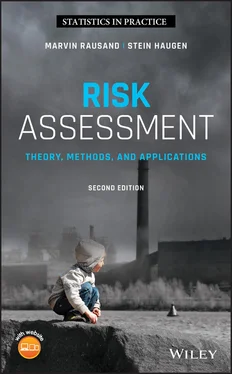
 . A risk analysis shows that this measure will reduce the probability of a fatality by
. A risk analysis shows that this measure will reduce the probability of a fatality by  . If the decision‐maker evaluates and decides which
. If the decision‐maker evaluates and decides which  she is willing to invest in order to obtain the reduction
she is willing to invest in order to obtain the reduction  , the cost–benefit factor
, the cost–benefit factor  can be used to derive her value of a statistical life (VSL). VSL is obviously not a constant but is dependent on the context in the same way as acceptable risk. Factors that can influence VSL are the probability
can be used to derive her value of a statistical life (VSL). VSL is obviously not a constant but is dependent on the context in the same way as acceptable risk. Factors that can influence VSL are the probability  of a fatality, the total value of the investment, the consequences of a fatality for the company's reputation, and so on.
of a fatality, the total value of the investment, the consequences of a fatality for the company's reputation, and so on.



